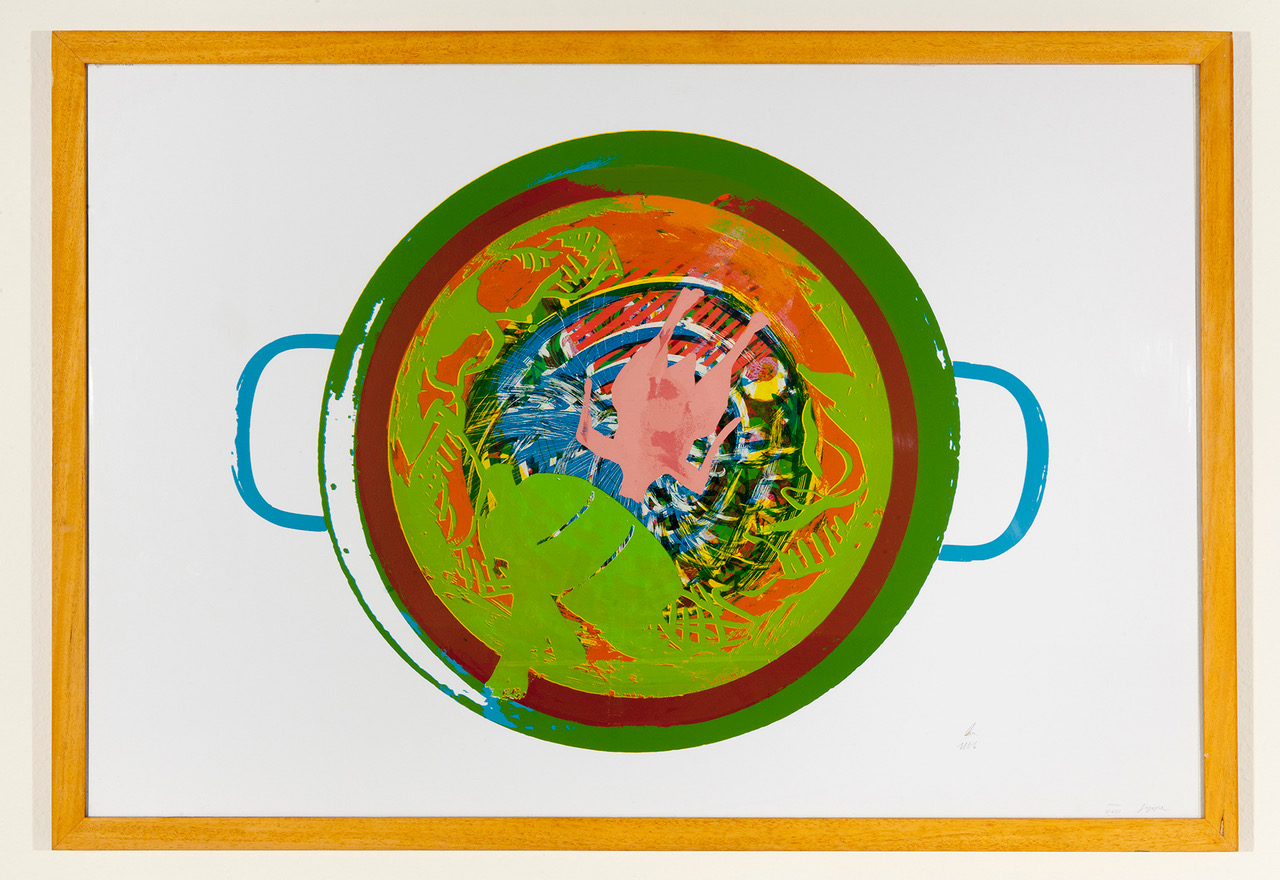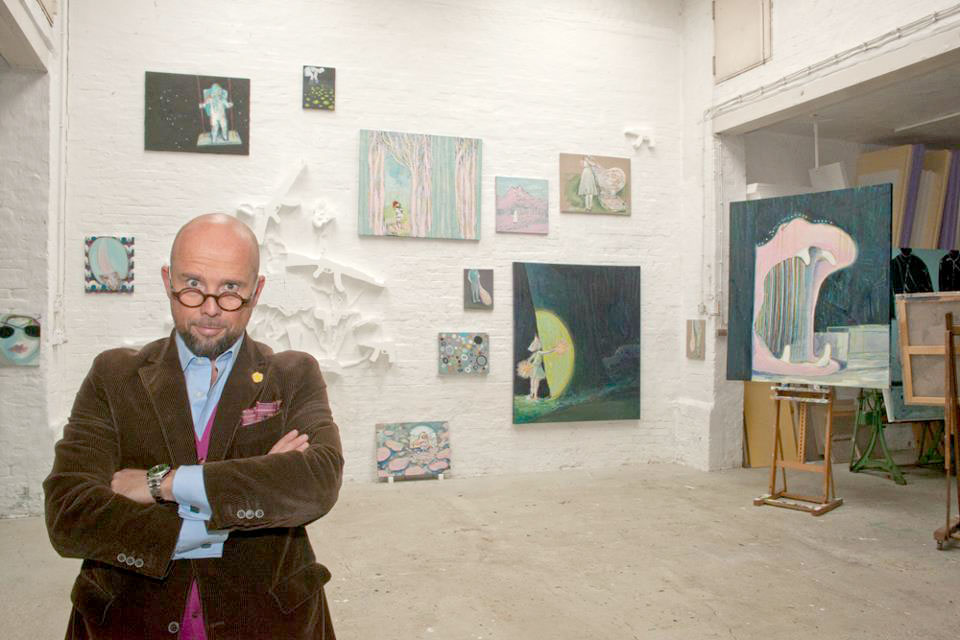Hannes Malte Mahler
Oeuvre
His unbridled creative urge and alert mind led Hannes Malte Mahler to ever new forms of artistic expression. He was always searching for interfaces and possible transformations of his work.
The spectrum of his artistic work ranged from the classic means of image creation, such as painting and drawing, to digital drawings and clips, photography, installations made of Styrodur, performative shooting at the annual glitterball shoot and much more. His art is often characterized by an intrinsic wink, biting irony, concise conclusions and Mahlerian acumen.
The themes in Hannes Malte Mahler's work are as diverse as the artist himself was versatile: they range from hidden values, failed fairy tales and mediocre heroes, hype and mountains, revolutions and doom, transformations and linearity, world spaces and endless loops, teleportations and disturbing phenomena, singing cells and soft clouds, junk bonds and pinstripe curtains to playful promises and countless more.
A look at the catalog raisonné
(in the making)
Painting
While Hannes Malte Mahler's early paintings were often created on a wide variety of painting surfaces such as found objects from bulky waste - whole table tops or doors of small chests of drawers or even embroidery pictures or old oil paintings that he painted over - he later used canvases, primed or unprimed as for the "Mediocre Superheroes" series or also for many pictures from the "Misguided Fairy Tales" series.
In his paintings we find the junk bonds and pinstripes critical of capitalism, alongside "Unwon Animals" from the "Rummel". The "Memory Sacks" perhaps also refer to the weight of our past, which the protagonists in Mahler's paintings carry around with them in heavy sacks. Colorful "Sprengpunkte & Haftpunkte" make us feel cheerful and the "Spooks" are not really scary. Mahler's soft clouds are not only found in the sky or in outer space, through which he lets a lonely astronaut float, while the child in the astronaut suit swings through space on a swing.
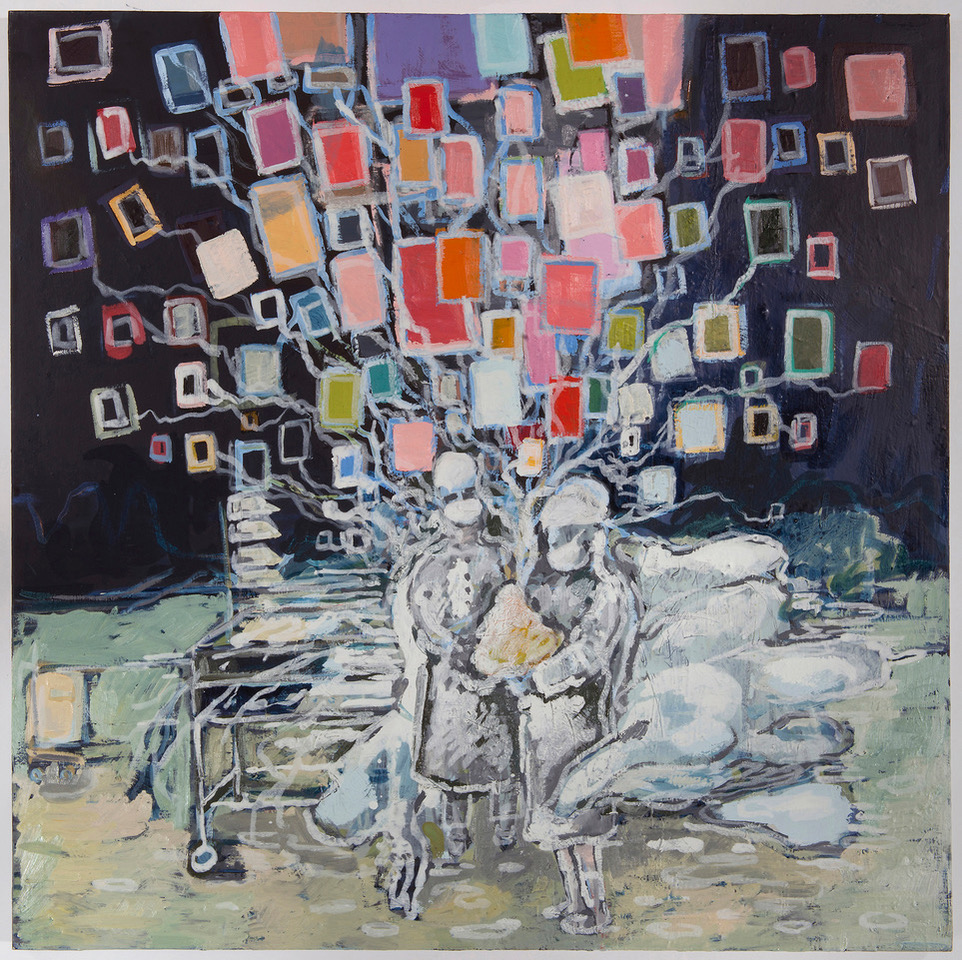
Drawing
Even though Hannes Malte Mahler was a universal artist who mastered many different techniques, he was first and foremost a gifted draughtsman.
The "daily performance" series was created in 2002. Mahler used slides from his family environment as models. In the works on paper, the protagonists perform in everyday situations, yet removed from everyday life and their surroundings. Mahler sets the people free by having them act in front of a white space or on a white background, drawn and then painted in watercolor.
In the "Generic Models" series, Mahler combines drawing and text to create wittily ironic or bitingly incisive images.
In Mahler's Drawing on Demand performances, drawings are created for the participating visitors according to their wishes and yet interpreted and realized individually and sometimes quite unconventionally by the artist.
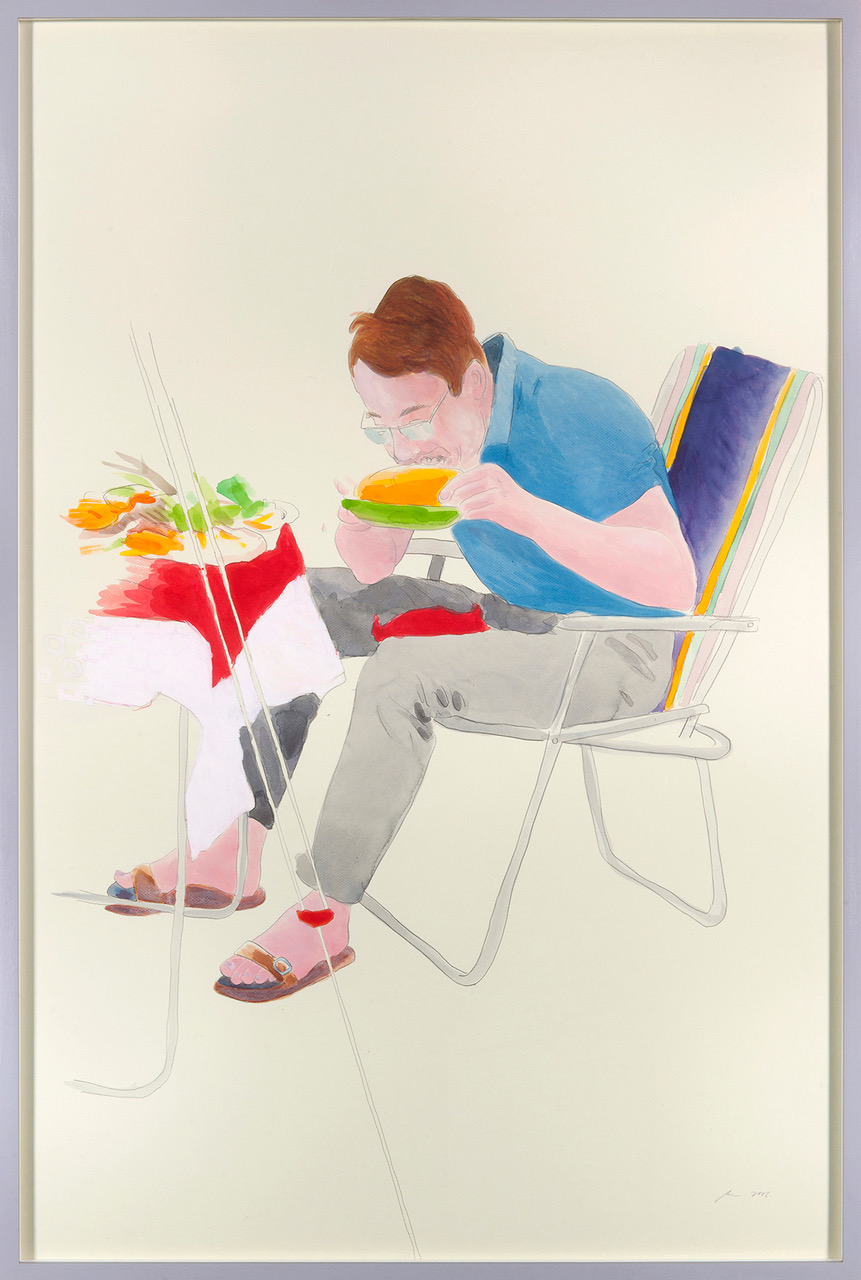
Quisquilia
Quisquilia are trivialities, trifles, marginalia, trivialities or simply unimportant things. In contrast to the works authorized by him and intended for the catalog raisonné, Hannes Malte Mahler's quisquilia are often small works and doodles created spontaneously. In the course of the 2019 exhibition "Hannes Malte Mahler. For a given occasion. Quisquilien und Kram", we decided to include the quisquiliums as a separate category in the catalog raisonné.
The small drawings and objects were created as gifts or souvenirs for birthday parties, dinners or tea invitations. On special occasions or as a commentary on shared conversations or experiences such as trips or visits to exhibitions. They were also created just like that - sometimes with a signature, sometimes without. The quisquiles, like the "large" works, reflect Hannes Malte Mahler's wit, his keen powers of observation and subtle humor as well as his inexhaustible variety of ideas, his flashes of inspiration and unusual associations. Mahler used these to comment on the everyday lives of his friends and companions and gave them these miniature works as a gift.
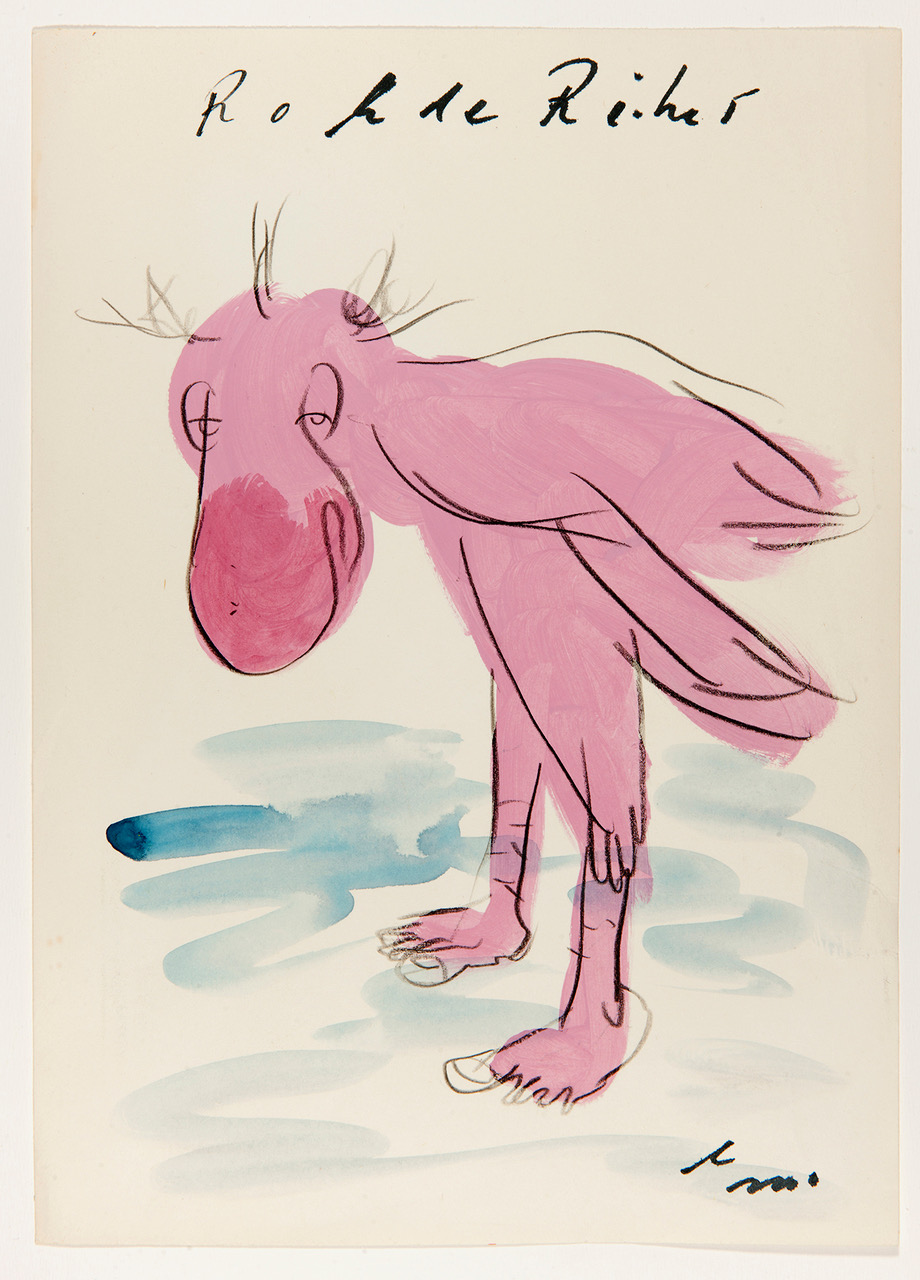
Objects
Hannes Malte Mahler created objects in particular as part of his early work. In the early 1990s, he often used found objects from bulky waste as a basis for his paintings. In some cases, he also turned found objects into art by making small (and larger) objects out of them. These objects are very often by-products of Mahler's artistic work and can be found in the form of quisquilia.
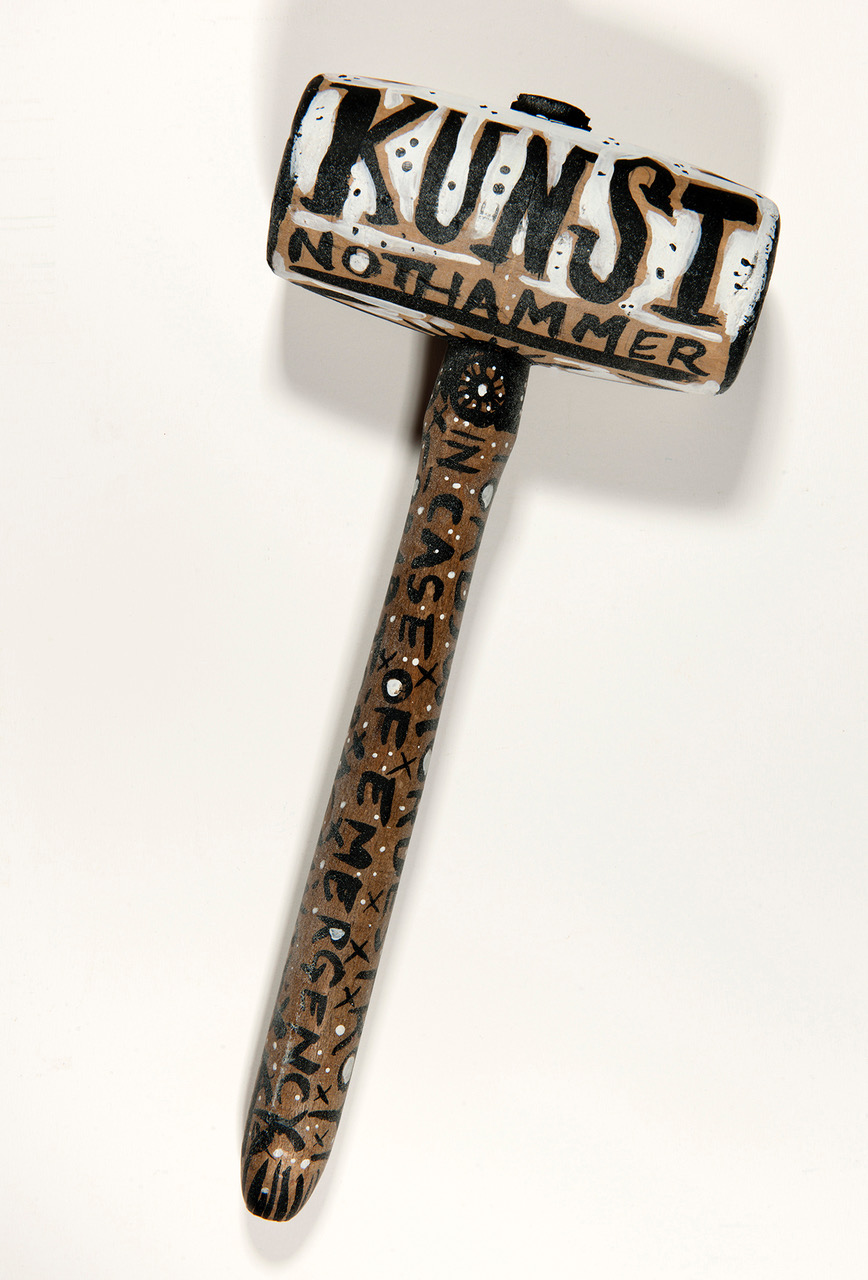
Graphic Art
Hannes Malte Mahler's prints are almost exclusively screen prints. While still a student at the Braunschweig University of Fine Arts, Mahler produced many screen prints, as he was able to use the workshop for screen printing there and did so willingly and extensively. Similar to his painting, he used "whatever came under his fingers" as a medium. He not only printed on paper, but also on the shelves of industrial metal racks, on plywood or Plexiglas panes. Mahler also sometimes used found objects from everyday life as motifs, such as an undershirt made of mesh fabric, a round crocheted doily or a shopping net. In addition, he liked to choose landscape motifs from the countryside, where he lived and worked with friends and girlfriends on a farm at the time, as motifs for his large-format screen prints. Among the screen prints, the series "SUPPE", created in 1996 with 20 pictures, is particularly noteworthy. Mahler showed them in an exhibition at the farm in Evern near Hanover in 1996 and the feinkunst Verein exhibited the pictures again in 2023.
